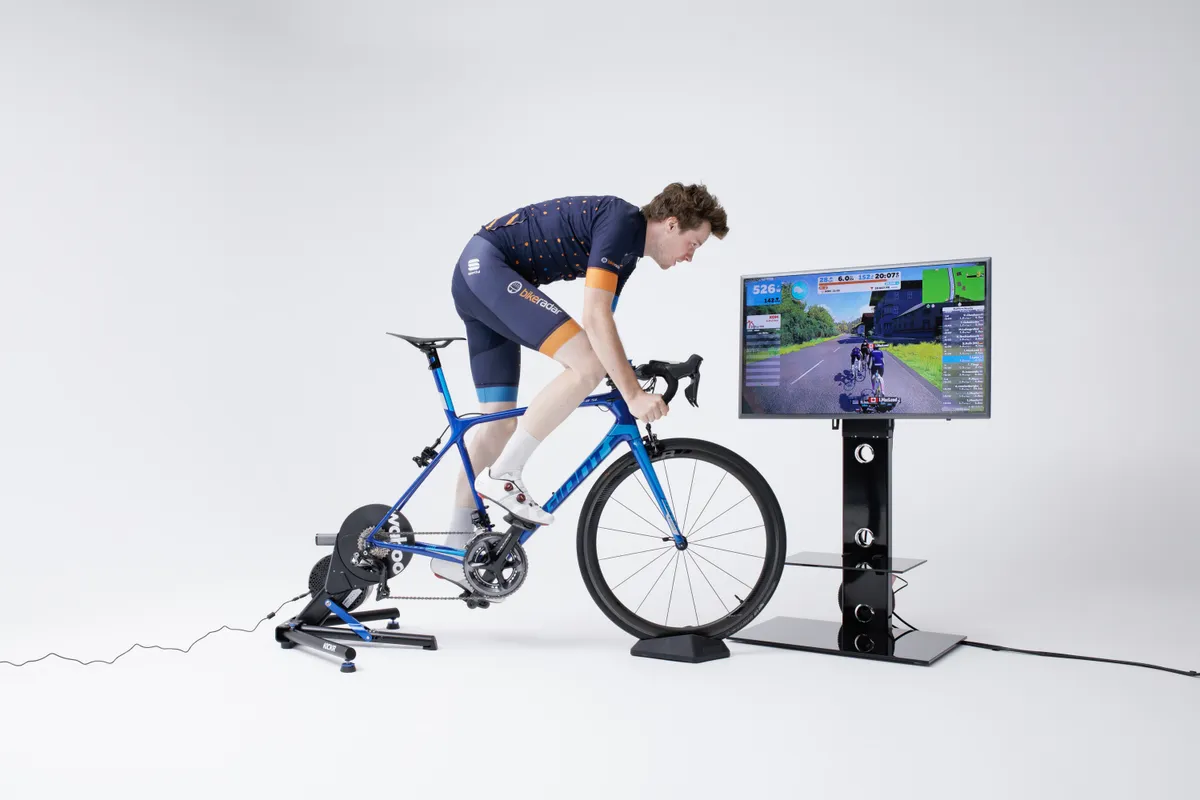Virtual racing has none of the drama that makes real racing enjoyable, and I will never, ever understand why you’d want to watch it.
The rise of esports has been accelerated by the coronavirus crisis, as race organisers desperate to salvage something from the wreckage of their cancelled events have looked to the digital alternative.
As a result, we’re now seeing virtual cycling touted as an actual spectator sport, and it seems all the major players in the game are looking for a piece of the pie.
I don’t get it, and I have no interest – and never will – in watching virtual bike racing.
Indoor cycling is having a moment, that much is clear, and of course there's an obvious reason why.
At BikeRadar, we’re seeing big traffic numbers on stories about Zwift, smart trainers, Road Grand Tours and other related topics.
Last year, British Cycling held its first ‘eRacing Championships’ and the UCI announced the inaugural esports Cycling World Championships.
Now it’s 2020 and every major bike race in the near future has been cancelled or postponed.

The Tour de France, for example, is now (perhaps optimistically) scheduled to start on 29 August, while the Tokyo 2020 Olympic Games are now the Tokyo 2021 Olympic Games.
Earlier this month Greg Van Avermaet won a virtual ‘Tour of Flanders’ staged against 12 other riders, all racing from their homes on the BKool platform. You can still watch that race if you missed it.
And right now, a virtual Tour de Suisse (‘Digital Swiss 5’) is taking place on Rouvy.
But why?
As someone who’s watched a fair bit of pro cycling over the years, I’m not remotely interested in watching anyone, pro or amateur, propelling an avatar through a virtual landscape.
Regular pro cycling is a pretty weird activity at the best of times, but even if you don’t like it, you can’t deny it’s dramatic.
The visuals of mud, sweat and tears are genuinely compelling and, in the case of major races like the Tour de France, it’s a chance to ogle stunning landscapes and get a slice of a country’s history and architecture.
You can watch riders conquering impossible gradients, smashing over cobbles and flying down technical mountain descents.
Tyres get punctured, chains jam, and riders battle rain, wind and snow. They test their technical skills alongside their strength, and mistakes are punished harshly.
The whole spectacle is accompanied by an absurd caravan of motorbikes, cars and helicopters, with directeurs sportifs (it’s so dramatic they had to use a French word) shouting into radios and riders weeping by the roadside.

It’s a mad, irrational, wonderful circus, and virtual cycling offers none of it. Even the more realistic simulations are a pale shadow of the real thing.
I absolutely recognise the value of Zwift, Road Grand Tours and other similar apps as training tools.
Gamifying the indoor cycling experience was a stroke of brilliance, because fundamentally indoor training isn’t fun.
It can be satisfying in the way any intense workout is, but riding a stationary bike is never going to compare to the real-world experience of skimming over tarmac or dropping into a favourite trail.
The added social element of virtual cycling is clever too. Old-school indoor training is an inherently lonely activity, but the likes of Zwift are fully interactive, so you can chat with your friends or opponents as you ride or race.
Some of the BikeRadar team have been using Zwift to ride together before work and that's fantastic. At a time when in-person social contact isn't an option, it's a wholesome, healthy alternative to alcohol-fuelled Zoom pub gatherings.

Going from a useful training tool to something I, as a punter, might actually want to watch from the sidelines is a huge leap, and I simply can’t see why I’d want to make it.
Are we that desperate to watch humans compete, however artificial the scenario?
I actually have more sympathy for the other kind of esports – i.e. video games as a spectator sport – because games aren’t simply a lesser version of the real world, they’re an art form in their own right and, in some cases, they’re truly immersive and visually rewarding. The same can’t be said of virtual cycling.
Do what makes you happy, but don’t make me watch
These are strange times and I’m fully aware that many people are having a much tougher time than I am, with strict social distancing rules effectively confining them full-time to their homes.
Indoor cycling is a lifesaver for riders otherwise unable to exercise, but that doesn’t mean I want to watch you or anyone else doing it.
If I’m simply looking for entertainment, there’s a whole world of wonderful content out there for me, and an endless range of crafts or hobbies I could practice indoors to pass the time.
Why would I choose to watch a mind-numbing watts-per-kilo throwdown when I could be absorbing actual art, or schooling myself in the mysteries of sourdough and needlecraft, or any number of other arcane pursuits?

In my tech columns I often say something along the lines of “you do you”.
I’m not here to sprinkle virtual rain on your perfect virtual tarmac and if you’re genuinely excited about watching the pros compete online, I’m very happy for you to do that. I will not be tuning in.
Am I a dinosaur for feeling this way? Will you be telling your kids where you were when Nairo Quintana got the better of Chris Froome on Alpe du Zwift in the 2021 Tour of Watopia? Let me know what you think below.
Alternative take | Simon Bromley, technical writer
Give eRacing a chance
From an economic point of view, it’s important to first recognise the business model of professional road cycling is in dire need of modernisation. That’s been the case for years, but the current Covid-19 crisis has put a harsh spotlight on it. Esports is big business (and growing extremely fast) and cycling should absolutely be looking for a slice of that pie.
However much we enjoy the spectacle, traditional road racing relies too heavily on sponsorship, but if professional cycling can evolve its business model then we’re less likely to see our favourite races, riders and teams disappear because of financial difficulties.
With cycling’s current shop window closed, that’s more important than ever.
For esports in cycling to be successful, though, it has to be interesting to watch. It needs to transfer what makes cycling an exciting sport in real life into the digital realm. That means spectacular environments, incredible athletic feats and, perhaps most importantly, tactics and skill.
The Digital Swiss 5, currently being hosted on the Rouvy app, falls flat because the platform currently has no drafting mechanic.
If it’s just about raw power, I’m not interested.
Yes, the numbers are impressive, but watching a group of cyclists perform what essentially amounts to an FTP test is boring (and that’s from a data nerd who actually enjoys the numbers side of the sport).
However, platforms such as Zwift and RGT Cycling do simulate drafting, and even have other mechanics like power-ups that can make a tactical difference, in turn making those races more interesting to watch and take part in. This is the direction esports must take to make it viable.
Like anything new and different (ever heard of disc brakes on road bikes?), there will always be resistance to change, but esports shouldn’t be dismissed without giving it a chance to find its feet.
It’s not designed to replace ‘outdoor’ cycling and ‘real’ racing, but complement it. It’s giving more people, more choice and if it can help make the sport of cycling more sustainable in the long run, that surely can’t be a bad thing.
